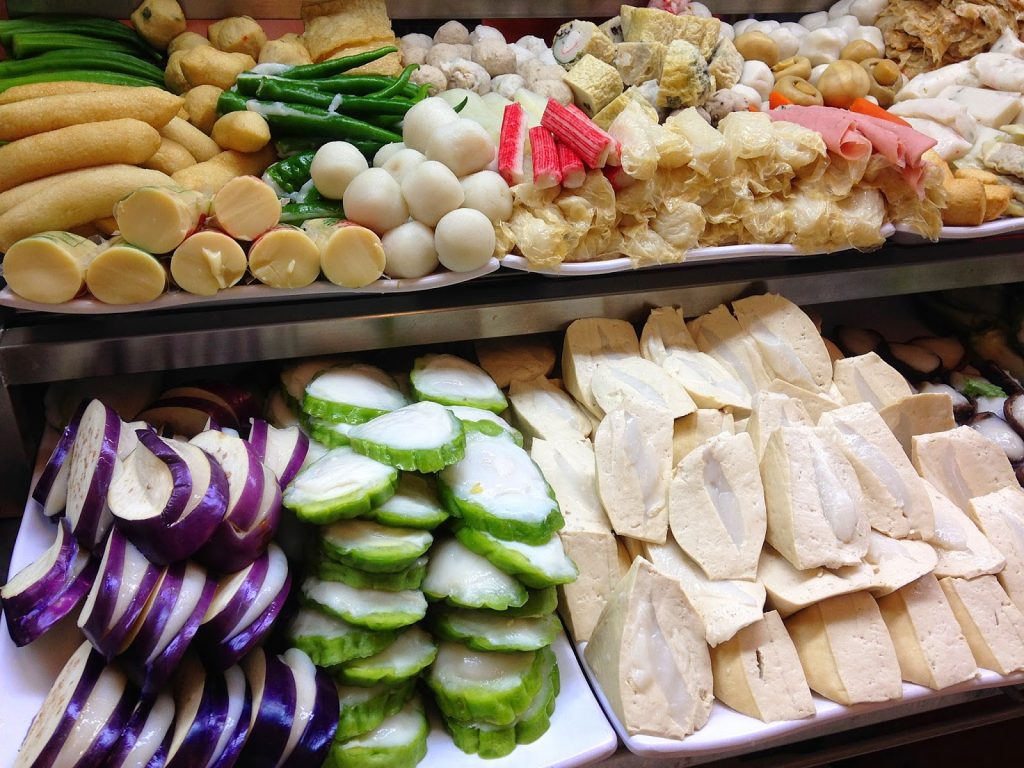Image credit: Benjamin Lim
For the first 16 years of my life, I did not step inside a hawker centre for food. I did not try chicken rice, hokkien mee, nasi lemak, popiah, ice kachang, prata, mee goreng, or even cai png until I was a legal adult.
This is the bizarre and somewhat hilarious story of how I pretended to hate Singaporean food for nearly a decade, without ever tasting it.
As some of the more astute readers might already have guessed, I am not a native-born Singaporean.
My name (Pan Jie) gives the game away. Although I look, talk and (probably) think like any other S’porean millennial, there is always one smart-arse in every clique who point outs my anomalous two-character name rarely seen in locals but common amongst PRCs.
They are right.
I was born 1992 in Shanghai and my family moved here in 1997. The plane carrying my mother and I landed in Changi shortly before my fifth birthday. My father, an engineer, had arrived two years earlier to build condos for Hong Leong. Finding Singapore exceptional in most ways, he made plans to relocate his family permanently.
When she landed, my mother concurred about Singapore’s agreeable nature. Even in the 90s, when it was just one lonely terminal, Changi airport was an awe-inspiring sight; never before had they seen an airport so fast, so clean, or with so many indoor water features.
In fact, ‘impressed’ would be the right word to describe most of our early years. Despite owning a grand total of exactly one dresser, one mattress, and a rickety homework desk, my parents pronounced everything in Singapore ‘excellent’.
In flush of first love, they thought the schools exceptional, the MPs gracious and kind, and the transport system first-rate. Orchard road was a wonder to behold, as were the many country clubs with golf courses. Infected by the mania peculiar to those more hopeful days, my father became briefly obsessed with the 5Cs. I remember evening driving lessons and ruminations about the various merits of country clubs we could not afford.
However, there was just one bone of contention with their new-found paradise: the Food.
My parents absolutely hated Singaporean food. They also hated the institution safeguarding local food—the hawker centre—with a passion that bordered on the religious.

People who are born here mostly treat the hawker centre as something useful but rather mundane, not unlike a vacuum cleaner. But for a foreigner fresh off the proverbial boat, first encounters with the open-air hawker centre felt like walking into a very hot, very pungent asylum.
Something was just not right. After a lifetime of eating in sterile, socialist-style canteens (think: SAF cookhouses), the hawker centre was bewildering.
We were overwhelmed by the open-air, free-for-all concept, by its sheer variety, by the sea of disposable styrofoam, by the sullen aunties who treated their customers with bored contempt; by cooking that was done in full view, steam billowing from a wok barely 3m from where we ate. For my mother and I, everything was strange and terrifying: from the garish, brightly colored signs to the dialect names which were impossible to pronounce because they violated every rule in Hanyu Pinyin.
Worst of all, we just couldn’t get over the flavors. It was recognizably ‘Chinese’, but it tasted nothing like the milder, sugary flavors native to Shanghai. Our complaints were endless: too much garlic, too much chili, too many herbals flavors in the soup, and too many mystery spices for a palate yet-unaccustomed to ‘strong’ condiments like soy sauce. My father, who had many Indian colleagues, tried Briyani and suffered diarrhoea for his efforts while my mother recoiled at the sight of ‘yellow’ noodles, so different from the pale, lamian-style noodles found back home.
As a family unit, we were horrified when a cai png stall dribbled curry over everything with wild abandon.
My mother, a fussy person by nature, took to it particularly badly. She could not understand how Singapore kept its streets so pristine but left every table littered with half-chewed meat gristle and dirty plates. She hated dining out in the oily sauna of a poorly-ventilated hawker centre with a passion.
Every time she sat down, her body bristled like a deer who sensed danger in the long grass. After admonishing me to keep my elbows off the dirty table, she would decontaminate the vicinity with a week’s worth of wet wipes before going off to buy the one dish they found tolerable: Yong Tau Foo.
It was all they ever ate in those early years. Bowl after bowl of yong tau foo, eaten without chili.

I wish I could write that we got used to kopitiams within a few months, but we never did. At least not for another decade.
Mothers often dictate a family’s eating habits. Scarred by the sensory overload, my mother ordered a retreat. Instead of getting used to popiahs and papadums, we fled to the safety of home-cooked food. In a labour of love and xenophobia, she cooked breakfast, lunch and dinner 7 days a week so the family need never set foot near the Gomorrah of a hawker centre ever again.
For special occasions, we invariably visited one of the many air-conditioned ‘Western’ franchises serving chicken chop w/ fries at a 900% markup.
Home-cooking was okay. What was less okay was the open hostility to all things Singaporean that was quickly developing in our three-room culinary ghetto.
Despite having tasted hawker food a grand total of perhaps twice, I aped my parents’ attitude of genuine dislike until it calcified into identity. Turning my nose up at local food. I refused to eat fishball noodles, ranted at the weird dishes served by the Indian-muslim stall, and in general, declared Singapore’s cuisine inferior to China’s in every conceivable way.
Of course, 7-year-old me understood absolutely fuck-all about the cuisine of either China or Singapore. It was just my juvenile way of rebelling. The novelty of immigration had worn off by then. I missed my grandparents. I was doing poorly at school. I was deeply unhappy at my parents for transplanting me into a nation whose main language I could not speak.
On top of all this, my childcare centre’s mediocre cooking made hatred all too easy. For so many years, I thought frozen nuggets were a local staple and that all bee hoon tasted like surgical tubing.

In retrospect, shitty bee hoon was never the issue.
Lacking the eloquence to express my angst, I took it out on the food. Strange food presented an easy target, and since I could not return to an idealised, imaginary homeland, the least I could do was to hate on my foster nation’s so-called food.
It was a child’s way of saying, “Fuck this, I want to go home.”
It was my way of holding fast to a ‘Chinese’ identity which I felt vaguely proud of, but had to keep hidden away in order to ‘fit in’.
While I don’t blame my parents because they were no doubt going through the same culture shock, I do wish we had worked harder at trying hawker food. Had we been more open-minded back then, I would not have grown up totally ignorant of hawker food.
And this ignorance would not, in the years to come, mutate into an endless source of anxiety, shame, and awkward hilarity.






